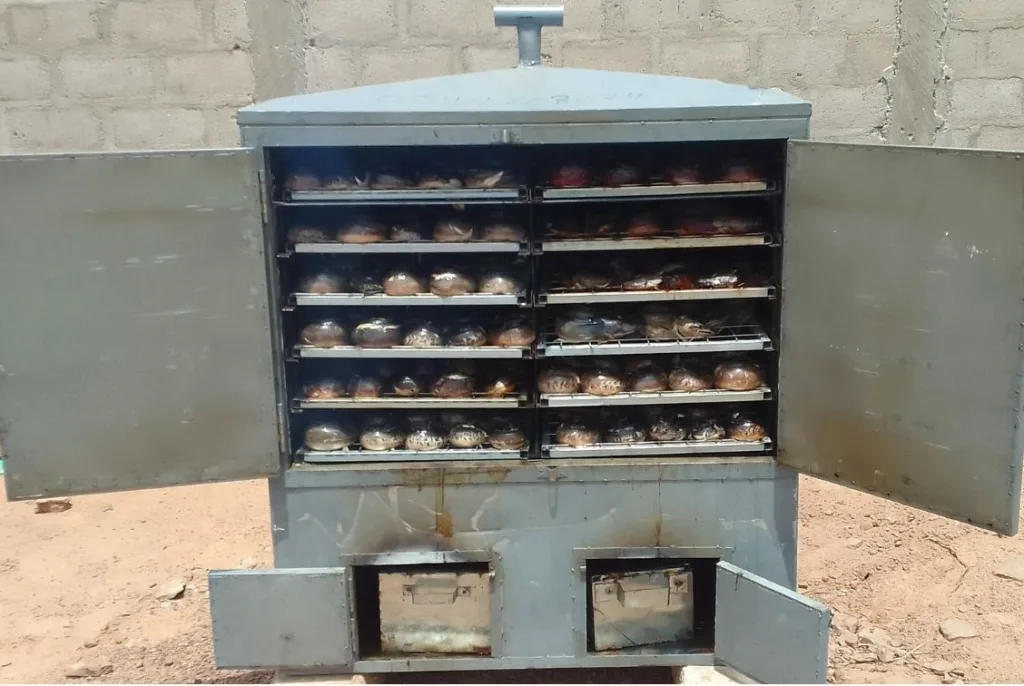How to smoke catfish is surely the question in the minds of most fish farmers because adding value to your fish is merit. One way to actively participate in this movement is by adding value to farm produce.
Smoking catfish is an excellent example of how farmers can transform a basic commodity into a premium product. Not only does smoking catfish enhance its flavor and shelf life, but it also offers consumers a unique culinary experience.
In this blog post, we will explore the art of smoking catfish and how it contributes to the value chain of farm produce.
The Process Of Smoking Catfish
The question of how to smoke catfish has several answers because ‘’there are so many ways of killing a cat”. I am going to take you through my way, the way I do smoke my catfish. So keep reading to the end.
Before smoking, it’s essential to properly clean and prepare the fish. Remove the scales, gut the fish, and wash it thoroughly. Some prefer to brine the catfish in a mixture of salt and water for a few hours to enhance flavor and moisture retention. Once prepared, the catfish is ready for smoking.
I personally use salt, lemon juice, or the lemon fruit itself to wash the fish. A part of the taste the salt adds, is also what we add to the live fish to kill them before preparing them for smoke.
Depending on how you want the smoked fish, we often don’t cut the fins and internal organs because we smoke it till it dries.
After you wash and clean the catfish, you then fold them. The folding is done in several ways. Some use small sticks to penetrate them either individually or together in a roll. But what we do is, turn the tail and put it in the mouth. Or we turn the tail and put it through the fin in the head.
When you fold them with any of the methods, then you put them on the shelf of the oven and push them in and close. By then your fire is already burning.
You continue to give more fire. Always check to change the positions of the shelves by rotating top to bottom. This is because those under are closer to the fire and therefore always smoke faster. To ensure homogeneous smoking, you bring those ones up and bring up ones down.
Continue this process till the stage you want it.
Always add more charcoal and fire when needed. When you need low fire, close the doors of the charcoal.

Selecting the Right Equipment
Investing in the right equipment is crucial for achieving the desired results when smoking catfish. A dedicated smoker, whether electric, charcoal, or wood-fired, or gas is essential.
Additionally, you’ll need quality wood chips or chunks to impart flavor during the smoking process. Popular choices include hickory, oak, Applewood, or mesquite, each offering a distinct aroma and taste profile.
The smoker we use is the type of oven that uses charcoal as a source of heat to dry them.
Mastering the Smoking Technique
Achieving the perfect smoked catfish requires patience and attention to detail. Start by preheating your smoker to the desired temperature, typically between 180°F to 225°F (82°C to 107°C).
Place the prepared catfish on the smoker racks, ensuring they’re evenly spaced for consistent smoking. Add the charcoal to the smoker box or directly onto the coals to generate smoke and fire.
Maintain a steady smoking temperature throughout the process, periodically checking to ensure it remains within the optimal range. Depending on the size and thickness of the catfish, smoking times may vary, typically ranging from 2 to 4 hours.
The goal is to achieve a golden brown color and a firm yet tender texture. But if the goal is to get a completely dry fish like we do on our farm, it takes 1 or 2 days, depending on the consistency of the heat applied.

Adding Flavor To Smoking
While smoking catfish imparts a rich smoky flavor, there are endless possibilities for customizing and enhancing its taste. Consider experimenting with different brine or marinade recipes to infuse additional flavors into the fish. From simple salt and pepper to complex spice blends or citrus-infused marinades, the options are limitless.
Packaging and Presentation
Once the catfish has been smoked to perfection, it’s time to package and present it appealingly.
Vacuum-sealed bags are ideal for preserving freshness and prolonging shelf life. Label each package with the date of smoking and any relevant information regarding flavor profiles or ingredients used. Consider adding a personalized touch with branded labels or packaging for a professional presentation.
Also, consider adding your contact details and business location for customers to easily contact or find you.

Marketing and Distribution
With your smoked catfish ready for market, it’s essential to strategize your marketing and distribution channels. Utilize local farmers’ markets, specialty food stores, or online platforms to reach potential customers.
Highlight the unique qualities of your smoked catfish, emphasizing its superior taste, freshness, and artisanal production methods.
Engage with consumers through social media platforms, sharing behind-the-scenes glimpses of your smoking process and customer testimonials to build brand loyalty.
Create captivating messages and designs to share on social media platforms. To even ensure your social media presence, try creating your brand’s page across some of the social media platforms. That is exactly what I have done to promote my fish farm’s produce.
Importance of Smoking Fish
Before you learn how to smoke catfish, you need to know the numerous benefits it offers, both in terms of economic viability and product differentiation.
1. Value Addition
Smoking catfish adds significant value to the product. By transforming fresh catfish into a premium smoked delicacy, farmers can command higher prices for their produce. This value addition translates to increased profitability and a higher return on investment.
2. Diversification of Product Portfolio
Smoking catfish allows farmers to diversify their product portfolio. Instead of solely relying on selling fresh catfish, farmers can offer smoked catfish as a distinct product line. Diversification reduces dependency on a single product, mitigating risks associated with market fluctuations and seasonal demand variations.
3. Extended Shelf Life
Smoking catfish effectively extends its shelf life compared to fresh fish. The smoking process helps preserve the fish by reducing moisture content and inhibiting bacterial growth. As a result, smoked catfish have a longer shelf life, allowing farmers to store and distribute their product over an extended period without concerns about spoilage. This is especially so if you smoke it dry. Know this before learning how to smoke catfish
4. Market Differentiation
Smoked catfish stands out in the market due to its unique flavor profile and artisanal appeal. In a competitive marketplace, offering a specialty product like smoked catfish can attract discerning consumers looking for high-quality, gourmet options.
Market differentiation enhances brand visibility and customer loyalty, ultimately leading to increased sales and market share.
In my fish farm, I get orders of demand for smoked catfish far more than orders of fresh catfish.
5. Utilization of Surplus or Imperfect Fish
Smoking catfish provides a sustainable solution for utilizing surplus or imperfect fish that may not meet the standards for fresh fish sales.
Instead of discarding or selling these fish at lower prices, farmers can smoke them to enhance their market value. This practice minimizes waste and maximizes the utilization of farm resources.
6. Flexibility in Marketing and Distribution
Smoked Catfish offers flexibility in marketing and distribution channels. Farmers can explore various avenues, including local farmers’ markets, specialty food stores, online platforms, and direct-to-consumer sales.
This diversified approach allows farmers to reach a broader customer base and adapt to changing market dynamics.
7. Promotion of Culinary Heritage
Smoking catfish celebrates culinary heritage and tradition. In many cultures, smoked fish is a cherished delicacy with deep cultural significance.
By preserving and promoting the art of smoking catfish, farmers contribute to the preservation of culinary traditions while offering consumers a taste of authenticity and nostalgia.
8. Enhanced Profitability and Sustainability
Ultimately, smoking catfish contributes to the overall profitability and sustainability of farm operations.
By adding value to their produce, farmers can generate higher revenues and improve their financial resilience. Moreover, smoking catfish aligns with sustainable farming practices by promoting resource efficiency, waste reduction, and environmental stewardship.
Challenges of smoking catfish
Despite your eagerness to learn how to smoke catfish, you need to also know there are also limitations and challenges associated with the process. Here are some of the key limitations of smoking fish:
1. Time and Labor Intensive
Smoking fish is a time and labor-intensive process. From cleaning and preparing the fish to maintaining the smoker and monitoring the smoking process, it requires careful attention and dedication.
For small-scale farmers or those with limited resources, the time and labor involved in smoking fish may pose challenges.
2. Equipment Costs
Investing in the proper smoking equipment can be costly, particularly for farmers who are just starting or have limited capital. Quality smokers, wood chips or chunks, charcoal and other accessories contribute to the initial setup costs.
Additionally, ongoing maintenance and replacement of parts may incur additional expenses over time.
3. Skill and Expertise
Achieving consistent and high-quality results when smoking fish requires skill and expertise.
Farmers must master the smoking technique, including controlling temperature, smoking density, and smoking duration.
Without proper training or experience, farmers may struggle to learn how to smoke catfish that meets consumer expectations in terms of flavor, texture, and appearance.
4. Food Safety Concerns
Smoking fish presents food safety concerns, particularly regarding the risk of bacterial contamination and foodborne illnesses.
Proper handling, storage, and sanitation practices are essential to minimize these risks. Farmers must adhere to strict hygiene standards throughout the smoking process to ensure the safety and quality of the smoked fish.
5. Regulatory Compliance
Farmers who engage in smoking fish for commercial purposes must comply with regulatory requirements and food safety regulations.
This may include obtaining permits, adhering to hygiene standards, and undergoing inspections by regulatory authorities such as the Food and Drugs Authority (FDA). Non-compliance can result in fines, penalties, or even the closure of the operation, posing legal and financial risks to the farmer.
6. Limited Shelf Life
While smoking extends the shelf life of fish compared to fresh fish, smoked fish still has a limited shelf life compared to other preservation methods such as freezing or canning.
Proper packaging and storage are crucial to maintain the quality and freshness of smoked fish.
Farmers must ensure timely distribution and rotation of inventory to minimize waste and avoid product spoilage.
Conclusion
Smoking catfish offers farmers a valuable opportunity to add value to their produce while meeting the growing demand for high-quality, locally sourced food products. By mastering the art of smoking catfish and incorporating innovative flavors and packaging techniques, farmers can elevate their product offerings and attract discerning consumers.
Despite these limitations, smoking fish remains a valuable technique for adding value to farm produce and providing consumers with a unique and flavorful product.
By addressing these challenges through proper training, investment in equipment, and adherence to food safety protocols, farmers can overcome obstacles and capitalize on the opportunities offered by smoking fish.
For practical steps, you may watch this video





